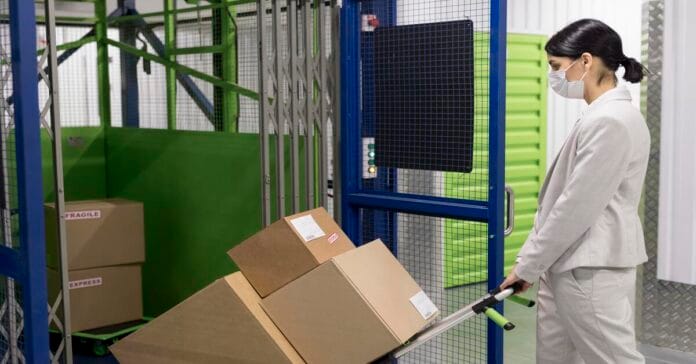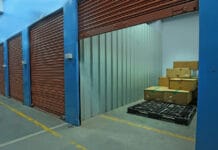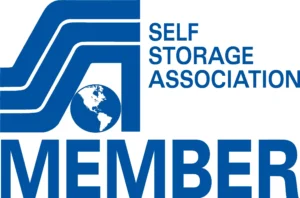On this journey of mastering the art of storage, we unravel the secrets to securing your belongings with essential tips. In our daily life, storage isn’t merely about stowing away items; it’s an art form that ensures your possessions are not only safe but easily accessible. A place where your belongings are neatly arranged, easily found when needed, and shielded from potential harm. We will explore the fundamentals of storage, providing you with the tools to create a masterpiece of organization in your living spaces.
From decluttering techniques to the selection of secure storage options, each tip is a stroke towards achieving storage harmony. Join us on this adventure as we explore the art of storage, revealing secrets that turn messy spaces into neat havens. Together, let’s make simple things special, transforming storage into a skill. Your belongings become a carefully organized set that shares a tale of efficiency, easy access, and safety. Become a storage expert and start a change that goes beyond normal to something extraordinary.
How to Master in the Art of Storage?
This is about more than just finding a place for your belongings – it’s about creating a harmonious balance of organization and accessibility. Start by decluttering and assessing what you truly need, ensuring that every item has its designated space. Embrace smart storage solutions, like using bins, baskets, and shelving units to maximize available space. Consider the frequency of use when arranging items, keeping everyday essentials easily accessible.
Don’t forget the power of labels – clear and concise labeling ensures you can find what you need at a glance. With a little creativity and commitment, mastering the art of storage becomes a rewarding and satisfying endeavor, transforming your space into an organized space where everything has its place, and you feel in control of your surroundings. Happy organizing!
1. The Modern Dilemma: Why Storage Matters
The 21st century has seen a surge in consumerism. With online shopping, seasonal sales, and the allure of new gadgets, we often find ourselves surrounded by a growing number of possessions. But where do we put them all? Efficient storage isn’t just about space-saving; it’s about preserving the quality and longevity of our items. Proper storage can prevent damage, decay, and loss, ensuring that our cherished belongings, whether they be family heirlooms or valuable electronics, remain in pristine condition for years to come.
2. Decluttering: The Essential Prelude
The journey to efficient storage begins long before you purchase storage bins or rent a storage unit. It starts at home, with the often daunting task of decluttering. This process isn’t just about creating physical space; it’s a mental and emotional journey. By categorizing items into ‘keep’, ‘donate’, ‘recycle’, and ‘discard’, we reassess the value of our possessions. This reflection often leads to a more minimalist and intentional approach to consumption, benefiting not just our homes but also our minds and wallets.
Learn how to store your goods effectively by embarking on the essential prelude of decluttering, a transformative process that not only creates physical space but also cultivates a minimalist mindset and intentional consumption.
3. The Art and Science of Storing Goods
Storing items isn’t as simple as tossing them into a box. Different items have different storage needs. While the science of storage emphasizes the importance of conditions like temperature, humidity, and light exposure, the art focuses on organization and accessibility. For instance, while it’s scientifically essential to store wine in a cool, dark place, the art comes into play when categorizing wines by type, vintage, or region, ensuring that your collection is both preserved and easily navigable.
4. Self Storage: The Game Changer
The rise of self-storage facilities has revolutionized our approach to storage. No longer are we limited to attics, basements, or garages. With self-storage, we have access to dedicated spaces designed specifically for the preservation and security of our belongings. These facilities often offer climate-controlled units, 24/7 security, and a range of sizes, ensuring that whether you’re storing a few boxes of seasonal clothing or an entire household’s worth of furniture, there’s a solution tailored to your needs.
Discover how to store your goods with utmost convenience and security through the game-changing concept of self-storage, where purpose-built units, climate control, and advanced security ensure your belongings are preserved and protected according to your specific requirements.
5. Selecting the Perfect Self Storage Unit
Choosing the right self-storage unit goes beyond size. It’s about understanding your unique needs. Are you storing artwork or electronics that might be sensitive to temperature fluctuations? Do you need a unit close to home for frequent access, or is a more affordable unit farther away sufficient? By considering factors like climate control, location, security features, and cost, you can find a unit that’s both functional and budget-friendly.
6. Packing Like a Pro
Effective packing is the cornerstone of storage. It’s not just about fitting items into a box but ensuring they remain in top condition. Investing in quality packing materials, from sturdy boxes to bubble wrap, can prevent damage. Labeling each box clearly and creating an inventory list can save hours of searching later on. Remember, the goal is to access your items easily and find them in the same condition you left them.
7. Maintenance: The Often Overlooked Aspect
Renting a self-storage unit isn’t the end of the storage journey. Regular maintenance is crucial. This involves periodic visits to check for signs of moisture, pests, or damage. It’s also an opportunity to rotate items, ensuring that those stored deep within are accessible. An updated inventory list, combined with a digital photo record, can be invaluable tools during these visits.
8. Insurance: Safeguarding Your Belongings
While security is a top priority for most storage facilities, it’s always wise to have an insurance backup. This added layer of protection ensures that in the rare event of damage, theft, or natural disasters, you’re not left bearing the full financial burden.
9. The Future of Storage: What’s Next?
The world of storage is ever-evolving. As urban spaces shrink and technology advances, we can expect even more innovative solutions. From smart storage units with app-based access to digital inventories using AI, the future promises even greater convenience, security, and efficiency.
Conclusion
Mastering the art of storage is about more than just finding a place for your belongings; it’s a journey of organization and peace of mind. By implementing the tips and tricks shared, you can transform storage into a seamless and efficient process. Remember, it’s not just about where you store things but how you do it, ensuring accessibility and protection.
Embrace the joy of a clutter-free space and the ease of finding what you need when you need it. Whether it’s tidying up a closet or optimizing a storage unit, the art of storage is a skill that brings order and simplicity to your life. So, start today, unlock the art of storage, and revel in the satisfaction of a well-organized and stress-free living space. Happy organizing!
FAQs
A: Implement security measures such as using quality locks, choosing well-lit storage units, and considering facilities with surveillance cameras.
A: Utilize shelving, label boxes clearly, and create an inventory list to enhance organization and accessibility within your storage unit.
A: Climate control helps prevent damage from temperature and humidity fluctuations, safeguarding items like furniture, electronics, and delicate possessions.
A: Items such as perishable goods, hazardous materials, and illegal items are generally prohibited in storage units.
A: Yes, they offer flexible access hours, allowing you to retrieve or store items at your convenience within specified timeframes.
A: Use appropriate packaging materials, seal boxes tightly, and consider placing protective covers on furniture to minimize the risk of dust and damage.
A: Yes, some storage facilities offer insurance options, and you can also explore adding a storage rider to your existing insurance for additional protection.
A: Look for facilities with features like surveillance cameras, access controls, and on-site personnel to enhance the overall security of your stored belongings.
A: Yes, by using a climate-controlled unit, proper packaging, and insurance coverage, you can safely store valuable or sentimental items in a storage unit.
A: Regularly visit your storage unit to inspect and maintain your belongings. This proactive approach helps identify any issues early.







